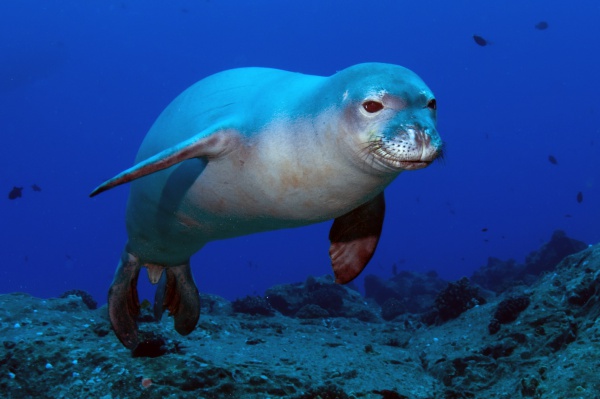Facts About Hawaiian monk seal
The Hawaiian monk seal, an earless seal endemic to the Hawaiian Islands, is an endangered species with a fascinating yet precarious existence. It shares its lineage with just one other monk seal species, the Mediterranean monk seal, while the Caribbean monk seal has already gone extinct. The Hawaiian monk seal faces numerous threats, including human activities, low genetic diversity, entanglement in fishing gear, marine debris, diseases, and historical hunting. To combat these challenges, conservationists employ strategies such as relocating seals, providing captive care, conducting habitat cleanups, and educating the public.
These seals, named *Neomonachus schauinslandi* after Hugo Schauinsland, a German scientist who discovered a seal skull on Laysan Island in 1899, are called ʻIlio-holo-i-ka-uaua by native Hawaiians, meaning "dog that runs in rough water." They exhibit grey coats, white bellies, and sleek bodies, which assist them in hunting fish, lobsters, octopuses, and squids in deep coral beds.
Belonging to the Phocidae family, Hawaiian monk seals have several distinctive features: they lack external ears, their hind flippers do not rotate under their bodies, and they have relatively small, flat heads with large black eyes. These seals also possess eight pairs of teeth and short snouts with nostrils positioned on top. Adults can weigh between 300–600 pounds and grow up to 8 feet long. They molt annually, shedding old hair and skin.
Millions of years ago, these seals migrated to Hawaii through the Central American Seaway. They spend most of their time at sea, diving deep to forage for fish, cephalopods, and crustaceans. However, predators like tiger sharks pose significant risks to them.
Hawaiian monk seals breed from June to August, with females giving birth to one pup each year. The pups are nursed for about six weeks before their mothers leave them. The species faces numerous threats, including low genetic variability, entanglement in marine debris, and reduced prey due to environmental changes.
Conservation efforts are comprehensive and varied. Protected areas have been designated, lobster fishing has been banned, and marine protected areas like the Papahānaumokuākea Marine National Monument have been established. Key initiatives include public outreach, education, and community programs. Programs like headstarting and relocation aim to increase female survival rates and address factors that limit population growth.
Despite these concerted efforts, the Hawaiian monk seal remains endangered, with an estimated population of around 1,400 individuals. The species continues to face significant challenges from both natural and human-induced threats, underscoring the need for ongoing conservation efforts to ensure its survival.

 Mexico
Mexico